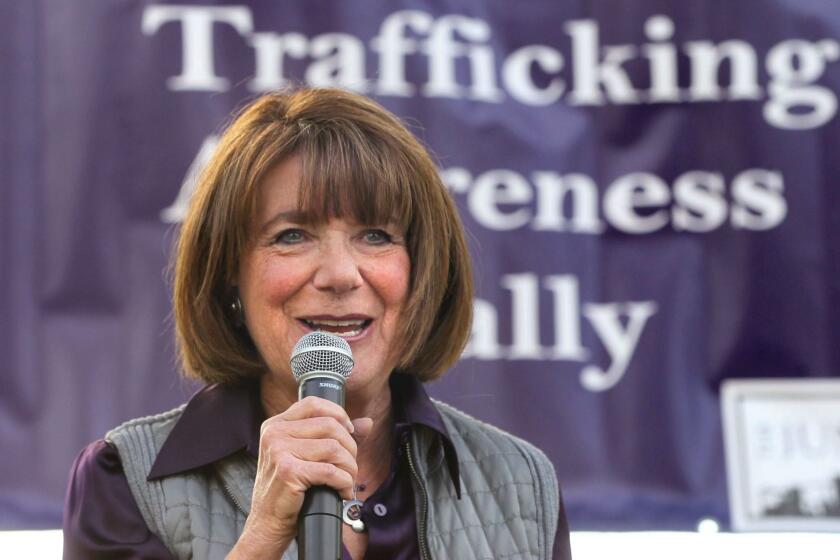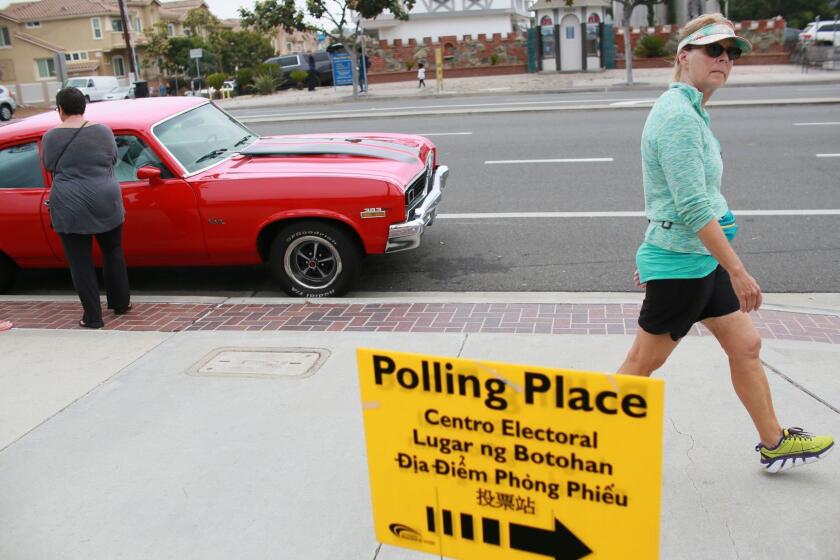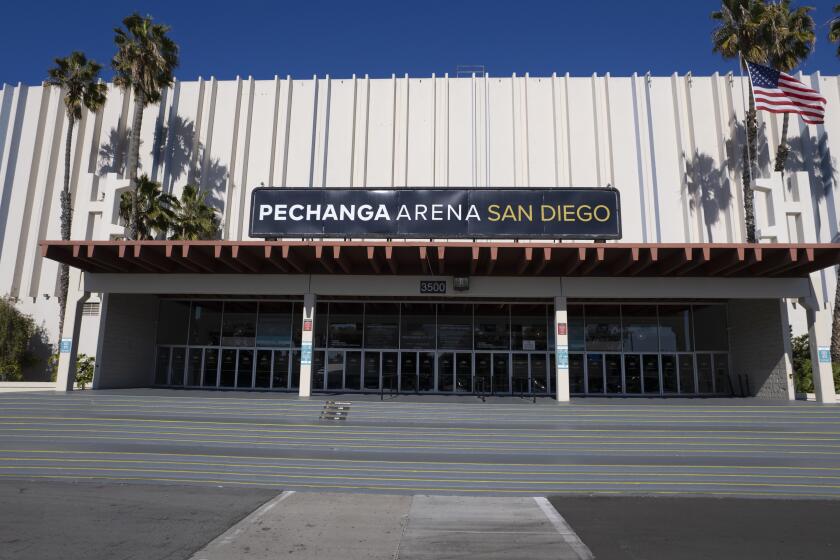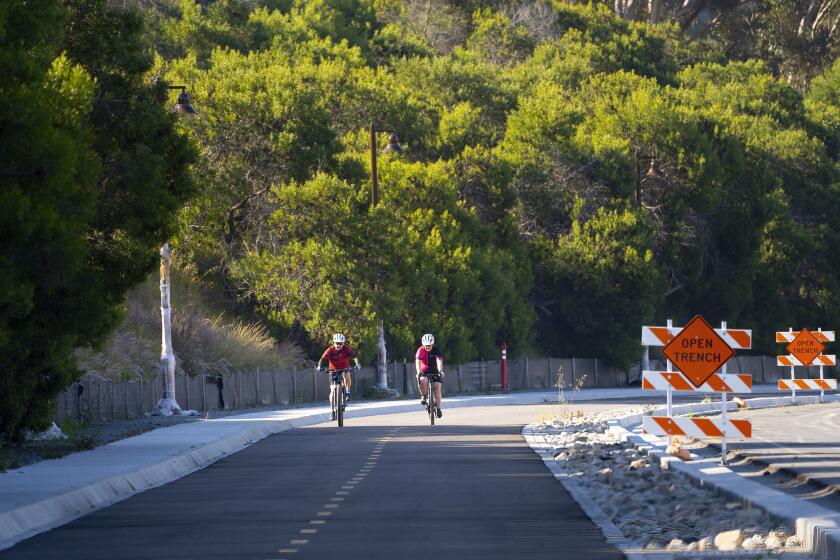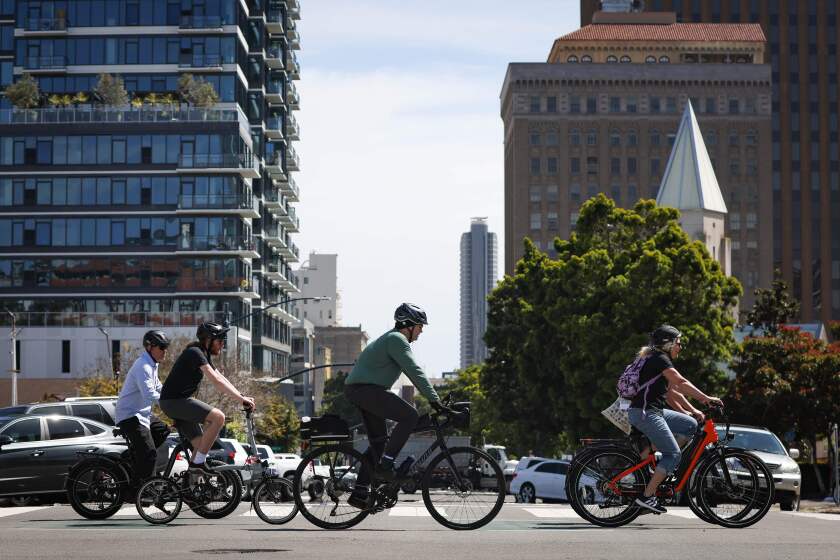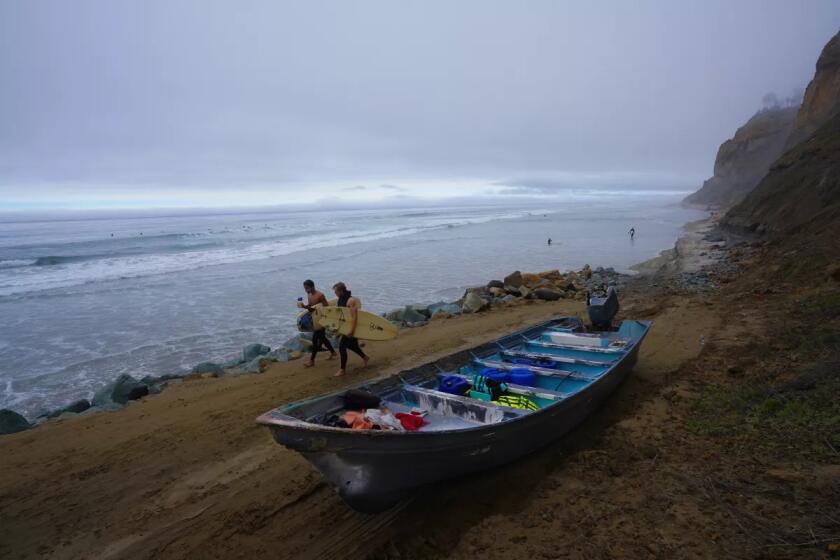Sales tax fight to be a major campaign
In less than two weeks, voters will get their first look at the final draft of a ballot measure that will have implications for the way commuters travel, the feel of neighborhoods and how much in everyone pays in taxes.
The San Diego Association of Government’s proposal to raise the sales tax a half cent hasn’t even been finalized, but organizations are already taking sides and building the foundations and staffs for a major, high-spending countywide campaign in November.
SANDAG Chairman Ron Roberts is the most prominent supporter, and he’s joined by San Diego City Councilman Todd Gloria, Imperial Beach Mayor Serge Dedina, Chula Vista Mayor Mary Salas, and a handful of other politicians, trade organizations and the San Diego Economic Development Corporation.
Roberts, a county supervisor, said he’s spoken with the San Diego Regional Chamber of Commerce about leading the campaign in support of the ballot measure. The will set up a committee, hire a political consultant, and raise money. Roberts estimate the campaign will cost up to $4 million.
“I won’t run that, per se, but I’ll be working very closely with them,” Roberts said.
The Chamber has not yet taken a position on the ballot measure, a spokeswoman said.
In opposition is the Quality of Life Coalition, a group of more than 20 union, environmental, health and transportation interests. While not working with that coalition, the Republican Party of San Diego County, San Diego Mayor Kevin Faulconer, San Diego Councilman Chris Cate and other politicians and advocacy groups are also against the legislation.
“We will oppose it with everything we have,” County Republican Chairman Tony Krvaric said.
Nicole Capretz, the executive director of the Climate Action Campaign, one of the organizations in the opposition coalition, said members are meeting to hiring a consultant and to discuss strategies and fundraising. Their campaign will be a major undertaking, but the people fighting against the ballot measure enter the race with a head start, she said, because of the high threshold required for approval.
“When you’re on a ‘no’ campaign on a two-thirds ballot measure, you don’t need that much. We have an advantage. The burden is on them,” she said.
SANDAG’s earlier polling on the measure shows that 67.8 percent of participants said they would probably or definitely vote in favor of the sales tax — slightly more than the two-thirds majority needed for approval. Support drops to 62.2 percent after voters learn more about the tax and what it will pay for.
At stake is a measure that enacts and funds a sweeping 40-year transportation and infrastructure plan that touches nearly every part of San Diego County. It includes upgrades to the existing Blue and Orange Trolley lines, 100 miles of new trolley lines, double-tracking Coaster tracks, managed lanes on Interstates 5, 15 and 805, and bike and pedestrian trails. It’s in addition to the half-cent salex tax voters approved in 1987 and extended in 2004. The old tax expires in 2048.
Supporters say the proposed tax will fund an imperfect plan, but it will still help unclog traffic jams and support the long-term growth and quality of life in the county while protecting the environment.
“This is really in everyone’s interest. We couldn’t satisfy 100 percent of the people... but now I see a very strong coalition that’s developing to bring this thing home,” Roberts said.
Opponents contend that the plan puts too much focus on highway and road projects that will not end congestion. If anything, it will likely worsen air quality and greenhouse gas emissions by encouraging more people to take a car, opponents said.
In all, the various parts of the plan are expected to cost more than $200 billion, funded in part by $18 billion in new revenue from the proposed half-cent sales tax increase. The difference between the sales tax revenue and the total cost, supporters hope, will be covered by the state and the feds; these governments will see that locals are willing to raise billions in seed money will contribute their own funds for regional transportation initiatives.
SANDAG board members have made a series of revisions to make the proposal more attractive in the voting booth. They’ve earmarked an estimated $4.3 billion of the revenue to cities so that local officials can control how some of the money is spent and put a greater emphasis on highways, a mode of transportation that’s more popular with commuters than mass transit.
On Friday, board members approved two amendments to the draft ordinance that give organized labor more chances to get construction contracts. There appeared, however, to be no immediate impact in terms of attracting union support. Another revision set a hard, 15-year deadline for a series of projects along the most congested corridors. This change and earlier revisions prompted Circulate San Diego, a transportation advocacy non-profit, to leave the Quality of Life Coalition and support the ballot measure.
In the process of fine-tuning the ordinance, some potential supporters might have been pushed away. The Quality of Life Coalition has pledged to only back the ballot measure if it reduces greenhouse gases and expands mass transit and biking and walking, among other initiatives. In order to satisfy their demands, SANDAG’s plan would have to more heavily focus on mass transportation projects at the expense of some highway expansions. But by giving cities some control, funding for mass transit construction and operations was reduced from a high of $9.12 billion in an early draft down to $7.5 billion.
At Friday’s SANDAG meeting, members of San Diego 350, an organization focused on climate change, said the investments on highway projects would worsen greenhouse gas emissions. At times they registered their opposition by speaking beyond their allotted two minutes, prompting security to usher them away from the lectern.
And the San Diego and Imperial Counties Labor Council, a member of the Quality of Life Coalition, said the ordinance needs a project-labor agreement that will guarantee that the billions in construction projects pay skilled laborers a fair wage.
“As proposed, this measure falls short of our vision and would move San Diego backwards not forwards,” said Samantha Peterson, the council’s spokeswoman.
Facing tough odds, SANDAG launched an outreach campaign to figure out what county residents like and don’t like in the measure, a strategy that would help craft a finely-tuned plan, while also learning what type of messages might results in favorable votes. SANDAG has launched a micro-website and a digital advertisements.
This type of polling, research and marketing, while crucial to a campaign, is inappropriate when done by a government agency and needs to stop, Haney Hong, the president and CEO of the San Diego County Taxpayers Association.
“When you’re spending $200,000 on multiple sequential polls, and a microwebsite and a Google ad, this is not education, it’s campaigning. Taxpayer money should not be used for campaigning,” Hong said.
The Taxpayers Association, while critical of SANDAG’s voter research and marketing, is still analyzing the details of the transportation plan and will likely make a decision in support or against the measure in the coming months, Hong said.
As SANDAG gets closer to sending the measure to the ballot, supporters said they think that opponents will find the ordinance is better than doing nothing and might give their support.
“This was a very hard lift,” Chula Vista Mayor Salas said. “We still have opposition, but the opposition is getting softer, I think. We have done such a good job in working with different interest groups to try and improve things.”
The people who are fighting against the measure have no plan to back down, nor are they losing their resolve, Capretz said. They’ve worked with SANDAG staff and board members to try and get a ballot measure on the ballot they could support. The plan isn’t to just defeat the current proposed ballot measure, but to subsequently create a better one, she said.
“We’re just as committed to building a new measure,” she said.
On July 8 SANDAG’s board will consider whether or not to put the ordinance on the ballot. If they do, the measure will go to the Board of Supervisors where it will, as a matter of procedure, be approved for voters to consider in November.
joshua.stewart@sduniontribune.com
(619) 293-1841
Get Essential San Diego, weekday mornings
Get top headlines from the Union-Tribune in your inbox weekday mornings, including top news, local, sports, business, entertainment and opinion.
You may occasionally receive promotional content from the San Diego Union-Tribune.

